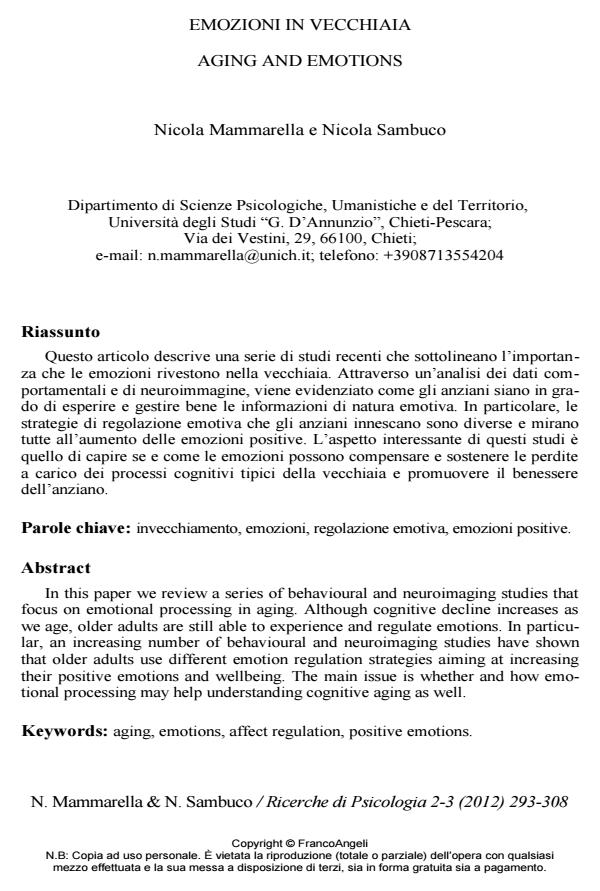Aging and emotions
Journal title RICERCHE DI PSICOLOGIA
Author/s Nicola Mammarella, Nicola Sambuco
Publishing Year 2013 Issue 2012/2-3
Language Italian Pages 16 P. 293-308 File size 238 KB
DOI 10.3280/RIP2012-002010
DOI is like a bar code for intellectual property: to have more infomation
click here
Below, you can see the article first page
If you want to buy this article in PDF format, you can do it, following the instructions to buy download credits

FrancoAngeli is member of Publishers International Linking Association, Inc (PILA), a not-for-profit association which run the CrossRef service enabling links to and from online scholarly content.
In this paper we review a series of behavioural and neuroimaging studies that focus on emotional processing in aging. Although cognitive decline increases as we age, older adults are still able to experience and regulate emotions. In particular, an increasing number of behavioural and neuroimaging studies have shown that older adults use different emotion regulation strategies aiming at increasing their positive emotions and wellbeing. The main issue is whether and how emotional processing may help understanding cognitive aging as well.
Keywords: Aging, emotions, affect regulation, positive emotions
Nicola Mammarella, Nicola Sambuco, Emozioni in vecchiaia in "RICERCHE DI PSICOLOGIA " 2-3/2012, pp 293-308, DOI: 10.3280/RIP2012-002010